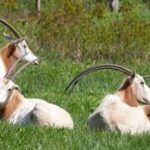In Pakistan, forage production systems play a significant role in supporting the livestock sector, which is a vital component of the country’s agriculture economy. Forage production systems in Pakistan can vary depending on factors such as climate, soil conditions, available resources, and agricultural practices. Here are some common forage production systems in Pakistan and their implications:
1. Natural Grazing Systems:
Description: Natural grazing systems involve allowing livestock to graze on natural pastures, rangelands, or uncultivated lands.
Implications:
Advantages: Low cost, minimal input requirements, utilization of marginal lands, and provision of year-round forage in some areas.
Challenges: Overgrazing, degradation of natural resources (e.g., soil erosion, loss of biodiversity), and vulnerability to climatic fluctuations (e.g., drought, floods).
2. Rainfed Forage Production:
Description: Rainfed forage production involves cultivating forage crops without irrigation, relying solely on rainfall.
Implications:
Advantages: Utilization of rainfed areas, lower water requirements compared to irrigated forage crops, and potential integration with crop-livestock systems.
Challenges: Variability in rainfall patterns, limited forage productivity and quality, and susceptibility to droughts and water shortages.
3. Irrigated Forage Production:
Description: Irrigated forage production involves cultivating forage crops with supplemental irrigation from surface water or groundwater sources.
Implications:
Advantages: Higher forage yields and quality, improved year-round availability of feed, and potential for multiple harvests per year.
Challenges: High water requirements, competition with other crops for irrigation water, and concerns about water scarcity and sustainability.
4. Dual-Purpose Crops:
Description: Dual-purpose crops are cultivated for both forage and grain production, providing feed for livestock and grains for human consumption.
Implications:
Advantages: Efficient utilization of land and resources, income diversification for farmers, and integration with crop-livestock systems.
Challenges: Balancing the requirements for forage and grain production, optimizing management practices for dual-purpose crops, and addressing market demand and price fluctuations.
5. Silage and Hay Production:
Description: Silage and hay production involves harvesting and storing forage crops as silage (fermented) or hay (dried) for use as stored feed during periods of scarcity.
Implications:
Advantages: Preservation of forage quality, availability of feed during off-seasons or droughts, and efficient use of surplus forage.
Challenges: High initial investment in storage infrastructure, labor requirements for harvesting and processing, and ensuring proper ensiling or drying to prevent spoilage.
6. Intensive Forage Systems:
Description: Intensive forage systems involve high-input, managed cultivation of high-yielding forage crops, often in rotation or as monocultures.
Implications:
Advantages: High forage productivity and quality, precise management of inputs (e.g., fertilizers, irrigation), and potential for mechanization and modern technologies.
Challenges: High initial investment and operating costs, dependence on external inputs, and environmental concerns (e.g., soil degradation, nutrient runoff).
Implications for Livestock Production:
Feed Availability: The type and availability of forage influence livestock feeding practices, productivity, and nutritional status.
Livestock Health and Performance: Access to quality forage impacts the health, growth, reproduction, and milk production of livestock.
Economic Viability: Forage production systems affect the cost of feed, profitability of livestock farming, and resilience to external shocks (e.g., droughts, market fluctuations).
Environmental Sustainability: Sustainable forage production practices are essential for conserving natural resources, mitigating climate change, and preserving biodiversity.
Overall, the choice of forage production system in Pakistan has significant implications for livestock production, food security, rural livelihoods, and environmental sustainability. Balancing the trade-offs between productivity, resource efficiency, and resilience is crucial for optimizing forage production systems and ensuring their long-term viability.


22-CUVAS-0201
22-cuvas-0188
22-CUVAS-0179
22-cuvas-0167
Muhammad Haroon Zafar
22-cuvas-0210
22-cuvas -0183